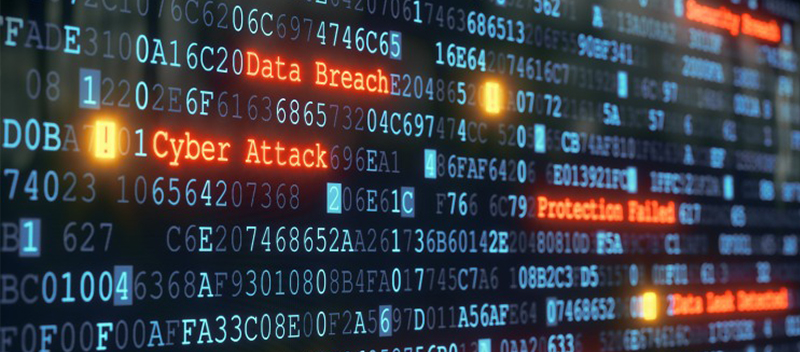Blog The Growing Threat of Phishing Attacks: Preparing for 2024
The Growing Threat of Phishing Attacks: Preparing for 2024

As we move forward into the future, the threat of cyber attacks looms more prominent than ever. Among these, phishing attacks are a particularly cunning form of cybercrime rapidly growing in frequency and sophistication. By 2024, these attacks will have evolved far beyond what we can handle. Therefore, understanding and mitigating the risk of phishing attacks is now more crucial than ever.
This article aims to provide a comprehensive guide on this looming cybersecurity threat. We’ll delve into the evolution of phishing attacks, exploring how they’ve changed over time and what new forms they may take. Next, we’ll discuss preventative measures, detection techniques, and effective response strategies to manage and recover from phishing attacks.
The Evolution of Phishing Attacks
Phishing attacks have rapidly evolved and significantly threaten individuals and businesses. According to reports, an estimated 3.4 billion phishing emails are sent daily, amounting to over a trillion emails yearly. These emails are designed to appear as if they’re from trusted senders, tricking recipients into divulging sensitive information.
Email impersonation, a popular tactic used in phishing attacks, accounts for approximately 1.2% of all global email traffic. This method involves cybercriminals pretending to be a legitimate entity to gain the trust of their victims. Regarding data breaches, around 36% involve phishing, demonstrating the significant role these attacks play in compromising data security.
In 2022, 84% of organizations were targets of at least one phishing attempt, a 15% increase from the previous year. This startling statistic underscores the magnitude of the phishing threat facing businesses today.
Since 2019, phishing attacks have seen a staggering annual increase of over 150%. The following numbers illustrate this growth:
-
-
- 2019: 779,200 attacks observed
- 2020: 1,845,814 attacks observed
- 2021: 2,847,773 attacks observed
- 2022: 4,744,699 attacks observed
-
Phishing attacks will continue to evolve in 2024. Industry experts predict that phishing scams will become even more sophisticated and prevalent. Even inexperienced threat actors are expected to rapidly produce emails for phishing thanks to generative artificial intelligence.
Mobile-specific threats are also predicted to increase in 2024. These attacks target users on their mobile devices, exploiting the increasing reliance on smartphones for communication and online transactions.
As we face a predicted $10.5 trillion in cyber attack damages, it’s clear that the threat landscape is swiftly evolving with more sophisticated and automated phishing attacks.
Preventative Measures
There are several proactive steps that individuals and businesses can undertake to shield themselves against phishing attacks. Here are some key preventative strategies:
Employee Training: One of the most effective ways to prevent phishing attacks is through regular security awareness training. This includes teaching staff how to identify suspicious emails and avoid clicking on unverified links or attachments.
Email Authentication Protocols: Implementing email authentication protocols like Sender Policy Framework (SPF), DomainKeys Identified Mail (DKIM), and Domain-based Message Authentication, Reporting & Conformance (DMARC) can help prevent spoofed or fraudulent emails from reaching users’ inboxes.
Modern Email Protection Gateways: Modern email protection gateways use advanced threat intelligence, machine learning, and automation to detect and block phishing emails before they reach users.
Two-Factor Authentication (2FA): Enabling 2FA adds an extra layer of security by requiring users to verify their identities through a second factor, such as a text message or mobile app notification.
Regular Software Updates: Keeping software and systems updated is critical for maintaining security. Cybercriminals often exploit known vulnerabilities in outdated software.
By adopting these best practices, individuals and businesses can significantly reduce their risk of falling victim to phishing scams.
For more on our cybersecurity and compliance services, Click Here
Detection Techniques
Effective detection techniques are crucial in safeguarding systems from potential cybersecurity threats. Here are some of the key techniques:
Regular Penetration Testing: This is an authorized simulated attack on a system, conducted to evaluate the security of the system. The pen test identifies weaknesses (also referred to as vulnerabilities) that could be exploited by attackers.
Intrusion Detection Systems (IDS): IDS, provided in managed security services, are designed to detect unusual activity or violations of policy. They work by monitoring system and network traffic, providing alerts when suspicious activity is detected.
User Behavior Analytics (UBA): UBA uses machine learning algorithms to track, collect, and assess user data and activities to detect potential malicious behavior. By establishing a baseline of ‘normal’ activity for each user, UBA can identify anomalies that may indicate a threat.
Firewalls: A firewall acts as a barrier between a trusted and an untrusted network. It controls incoming and outgoing network traffic based on predetermined security rules.
Antivirus Software: Antivirus software helps protect against malware, including phishing threats, by detecting, quarantining, and removing malicious programs.
Response Strategies
Effective response strategies are crucial in mitigating the impact of phishing attacks. Here are some key strategies:
Incident Response Planning: This involves a predetermined set of instructions or procedures to detect, respond to, and limit the effects of a cybersecurity breach or attack. The plan should also include steps for communicating with the public about the incident.
Collaboration with Industry Peers: Sharing threat intelligence and best practices among industry peers can strengthen defenses against phishing attacks. Collective defense is often more effective than individual efforts, as it allows businesses to learn from each other’s experiences and develop more robust security measures.
Working with Security Experts: Cybersecurity and compliance leaders like TrustNet can enhance an organization’s cybersecurity posture with our expertise and complete solutions. We provide a wide range of services, from penetration testing, cyber risk assessment, vendor risk assessment, security awareness training, and more.
Enhance your cyber defenses this 2024 and beyond. Talk to an Expert at TrustNet today for more information.




